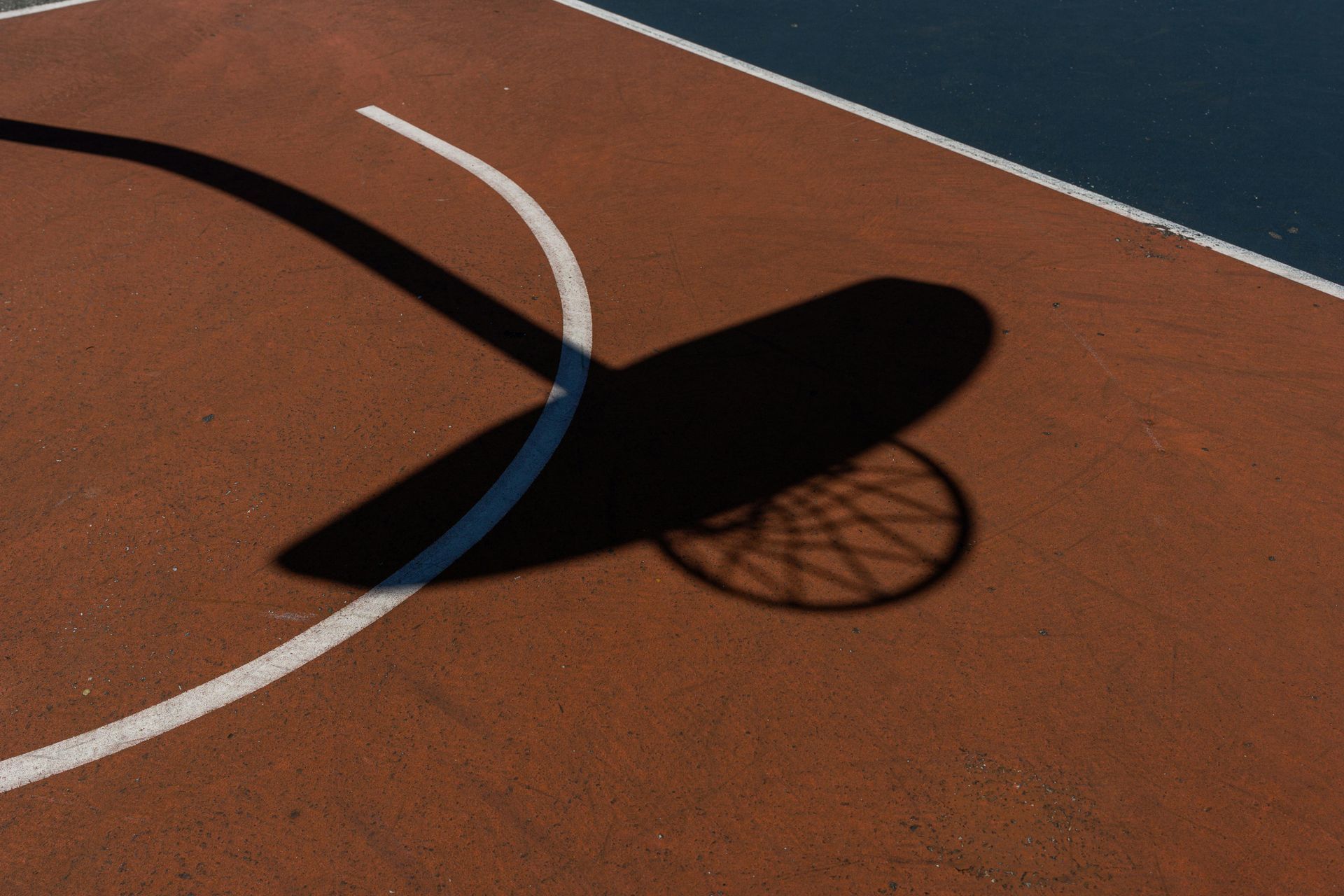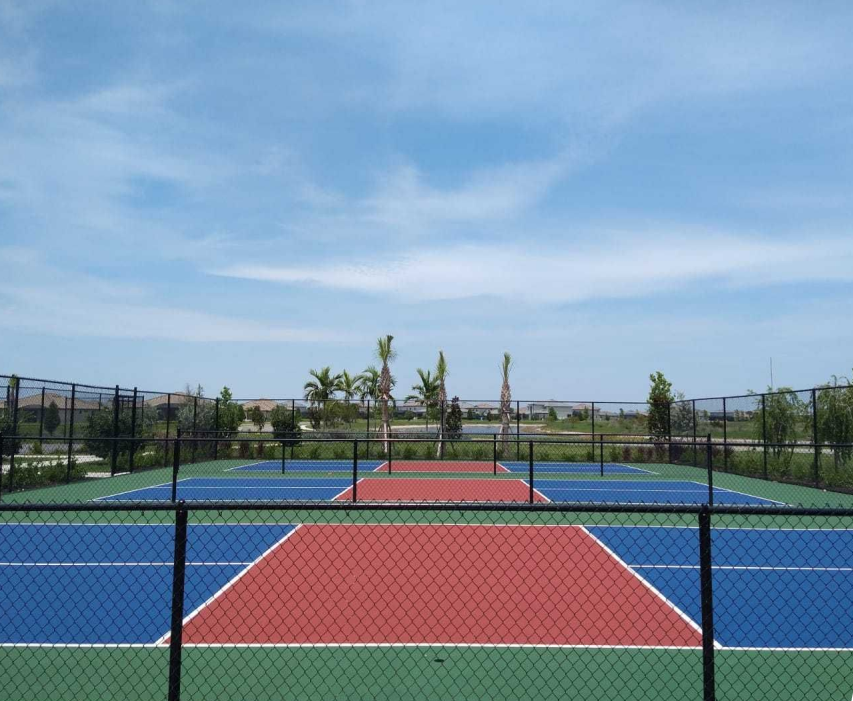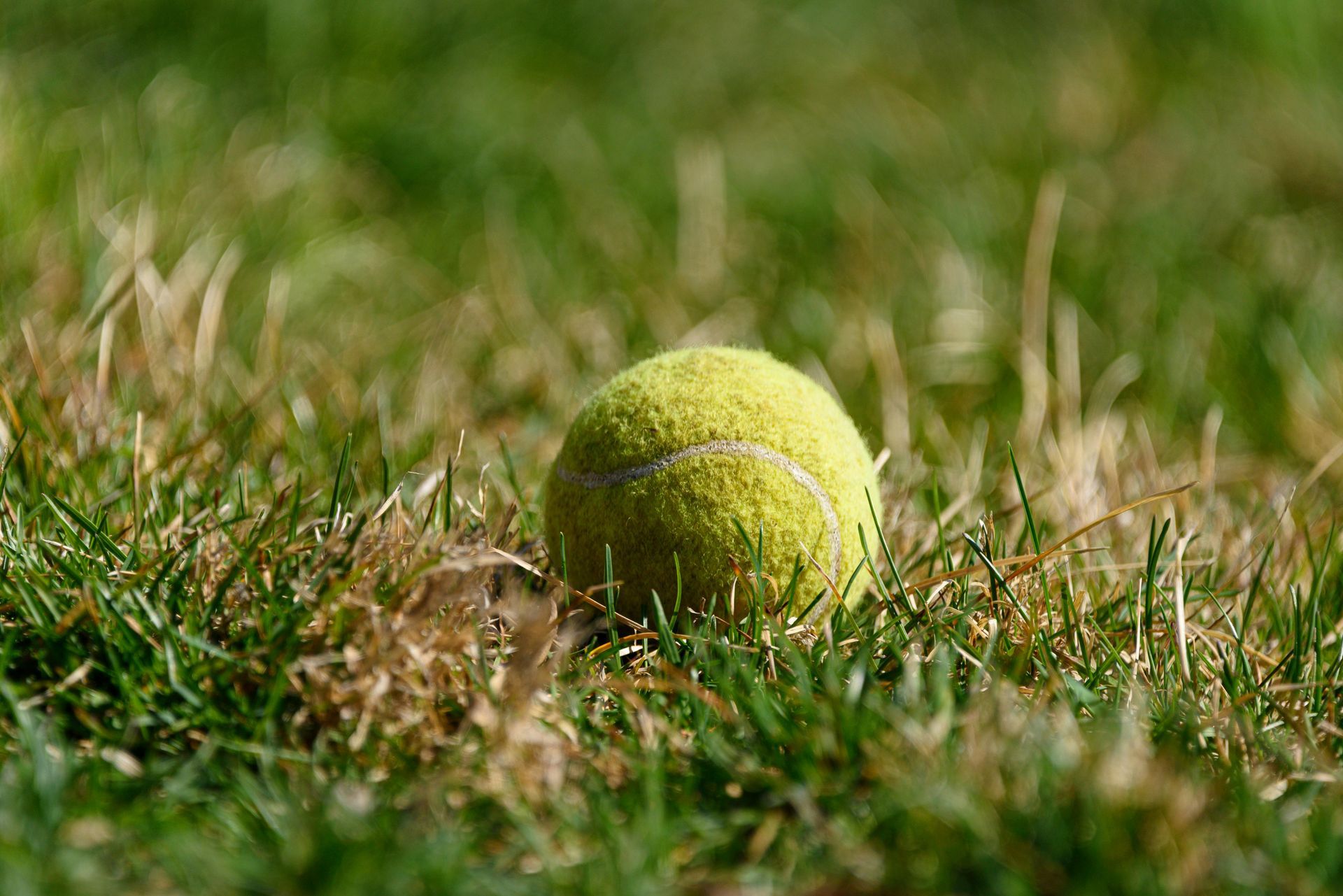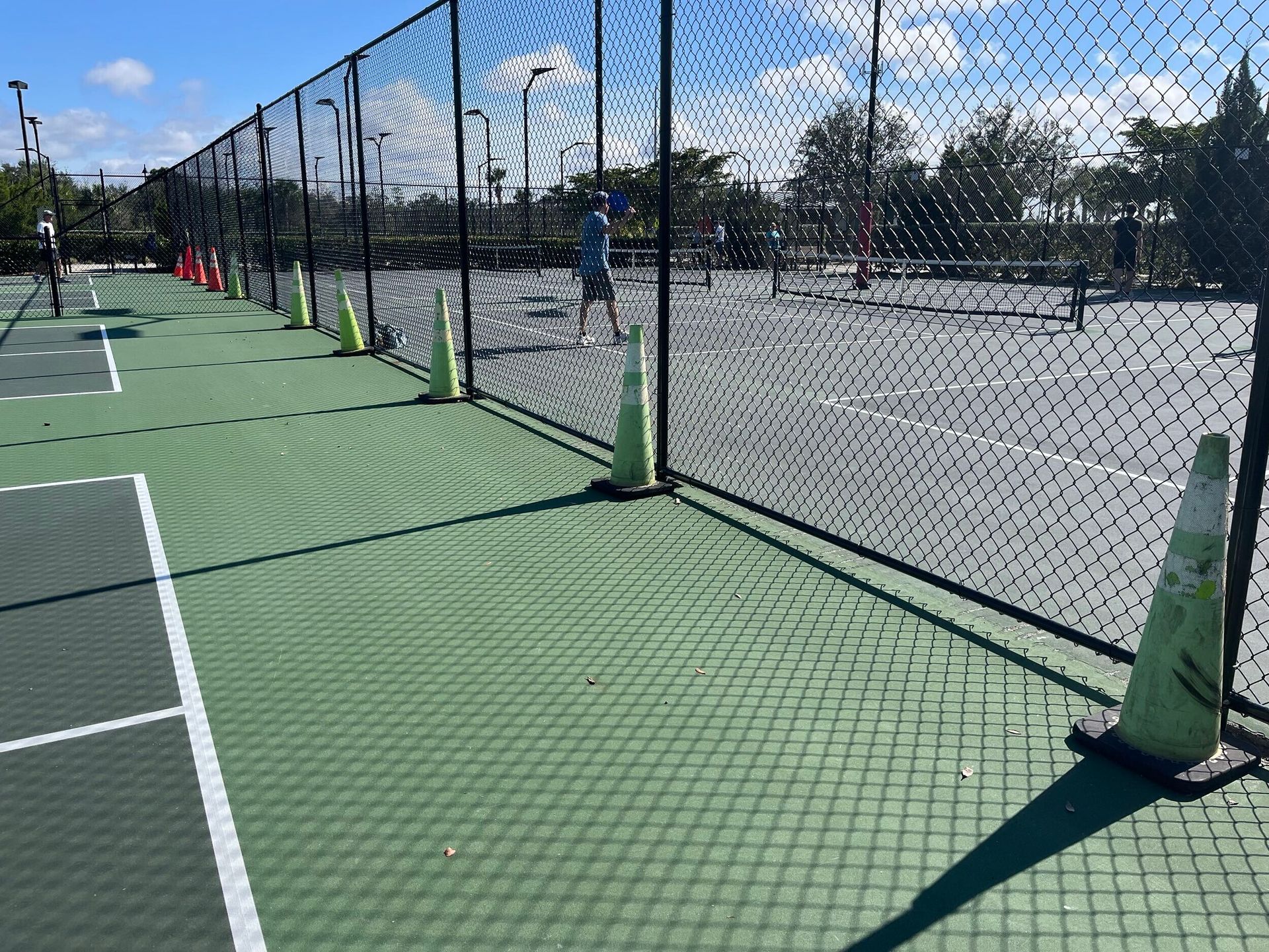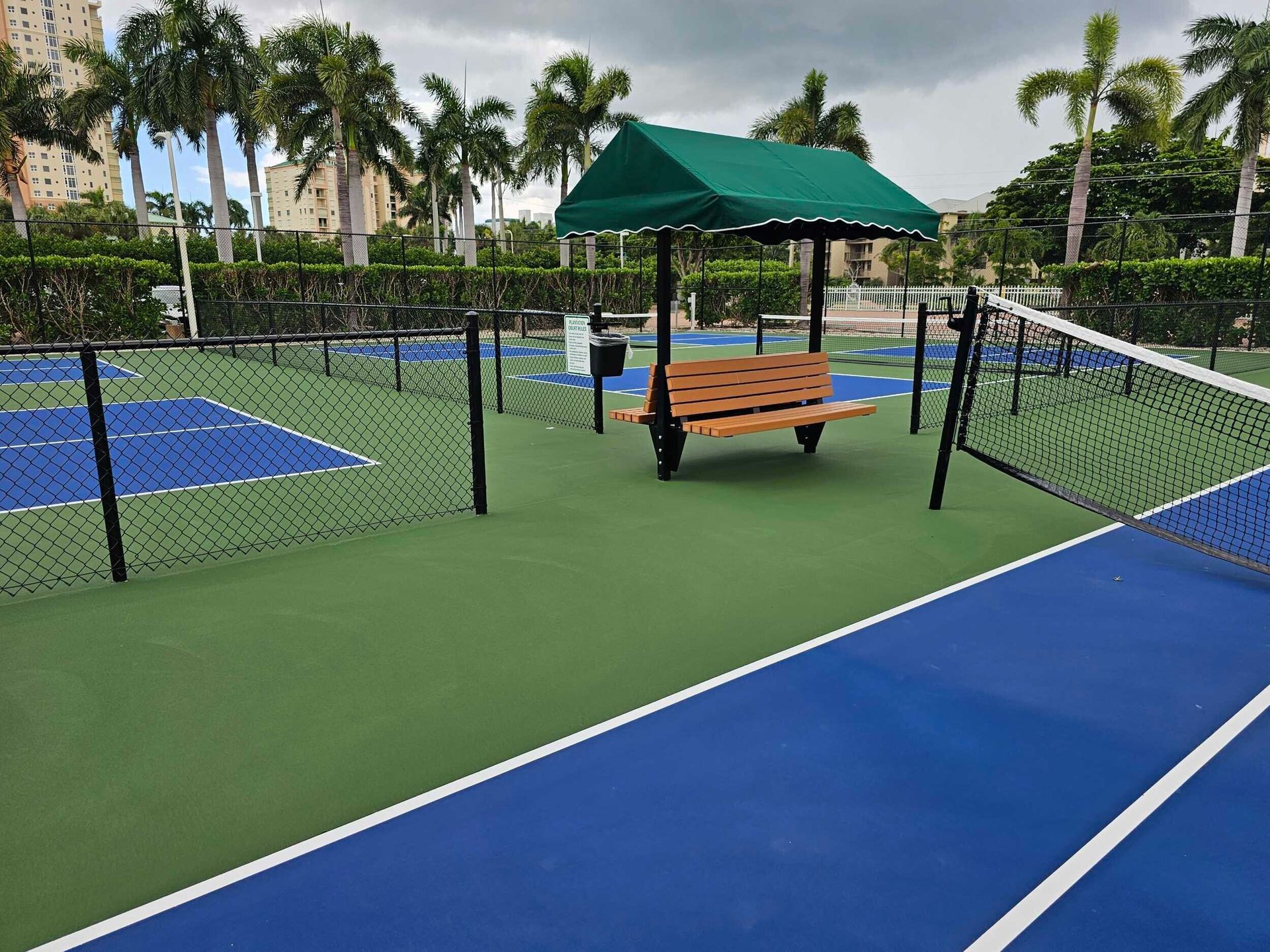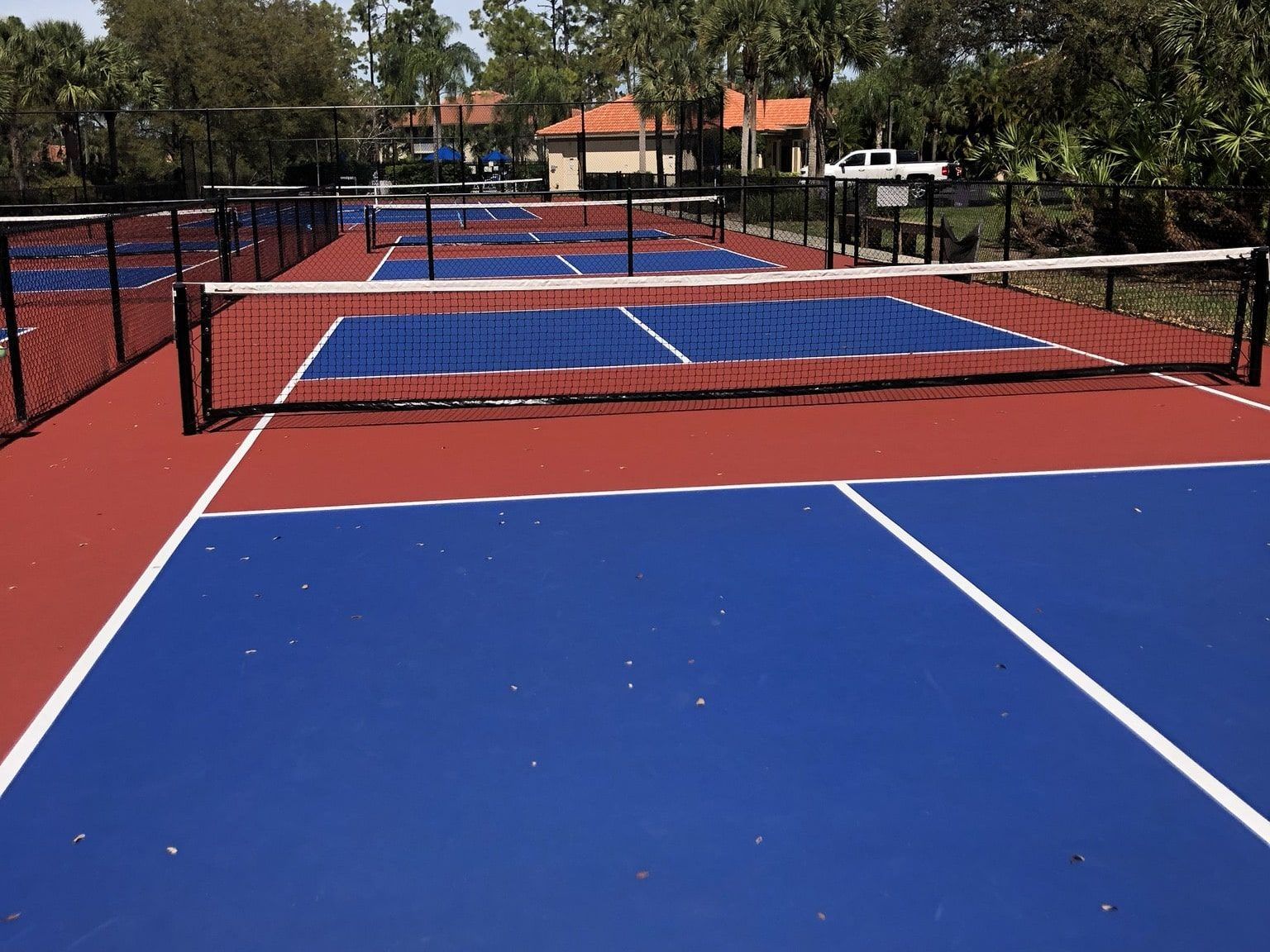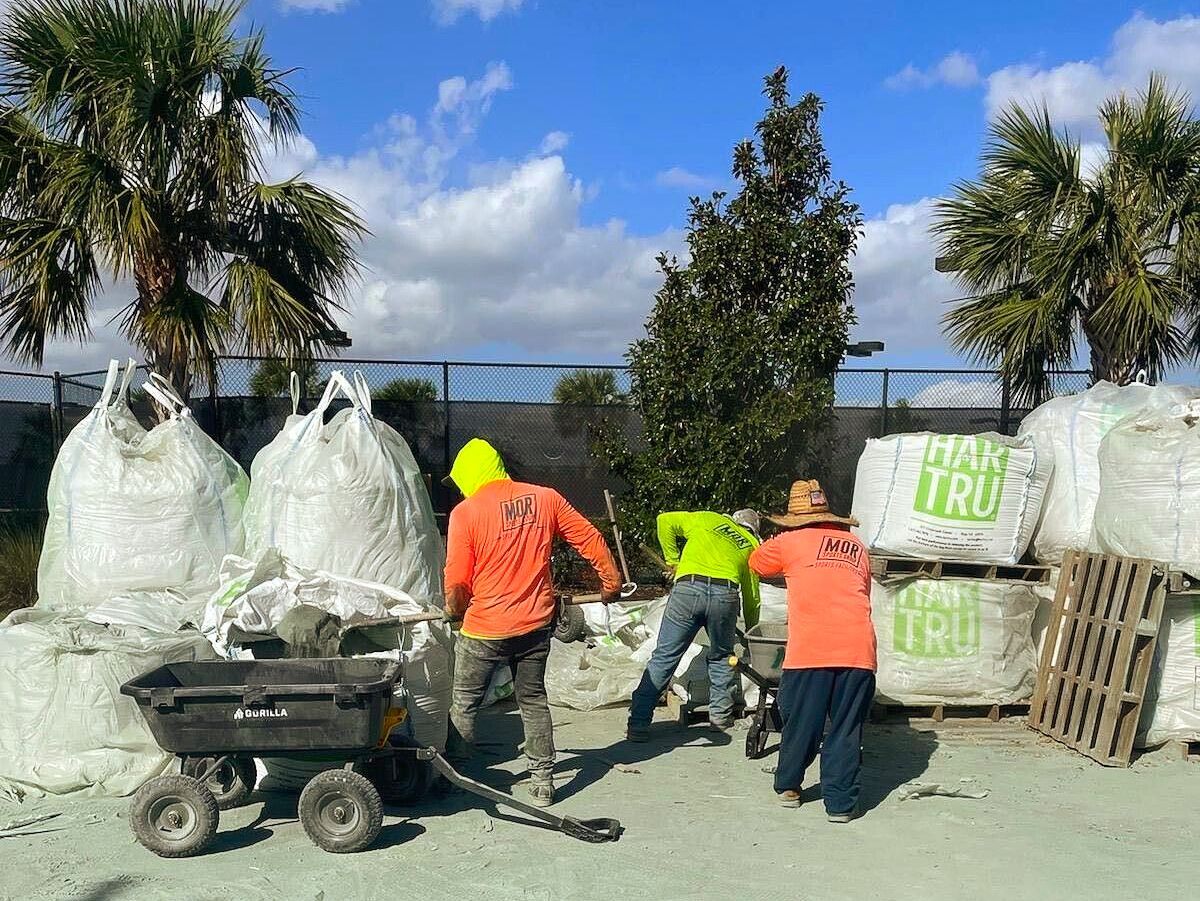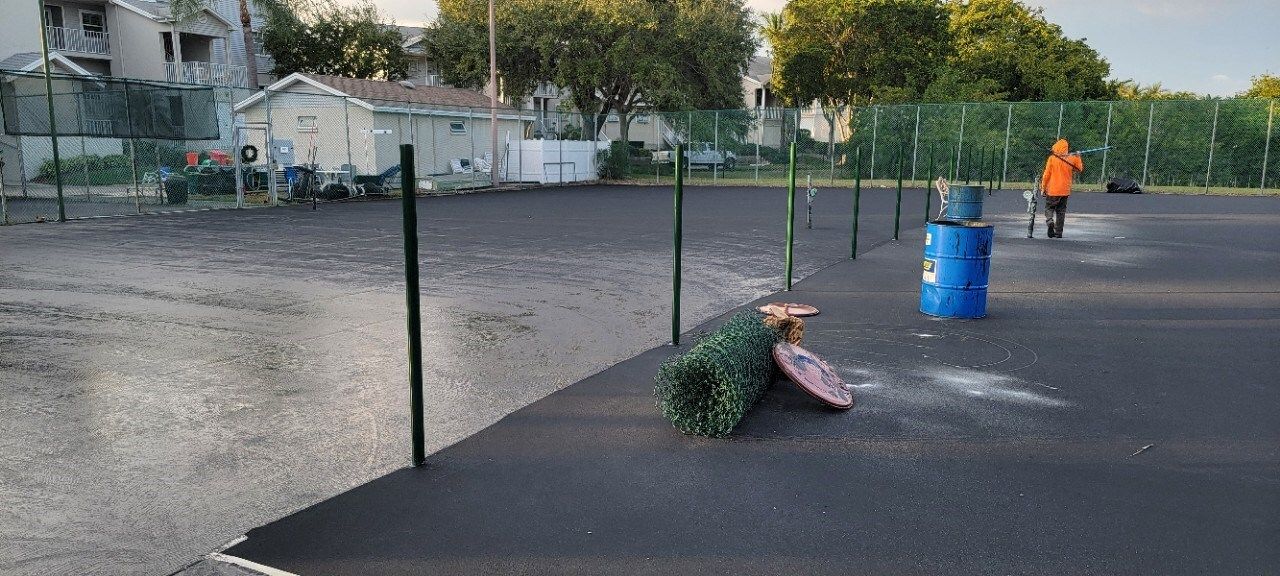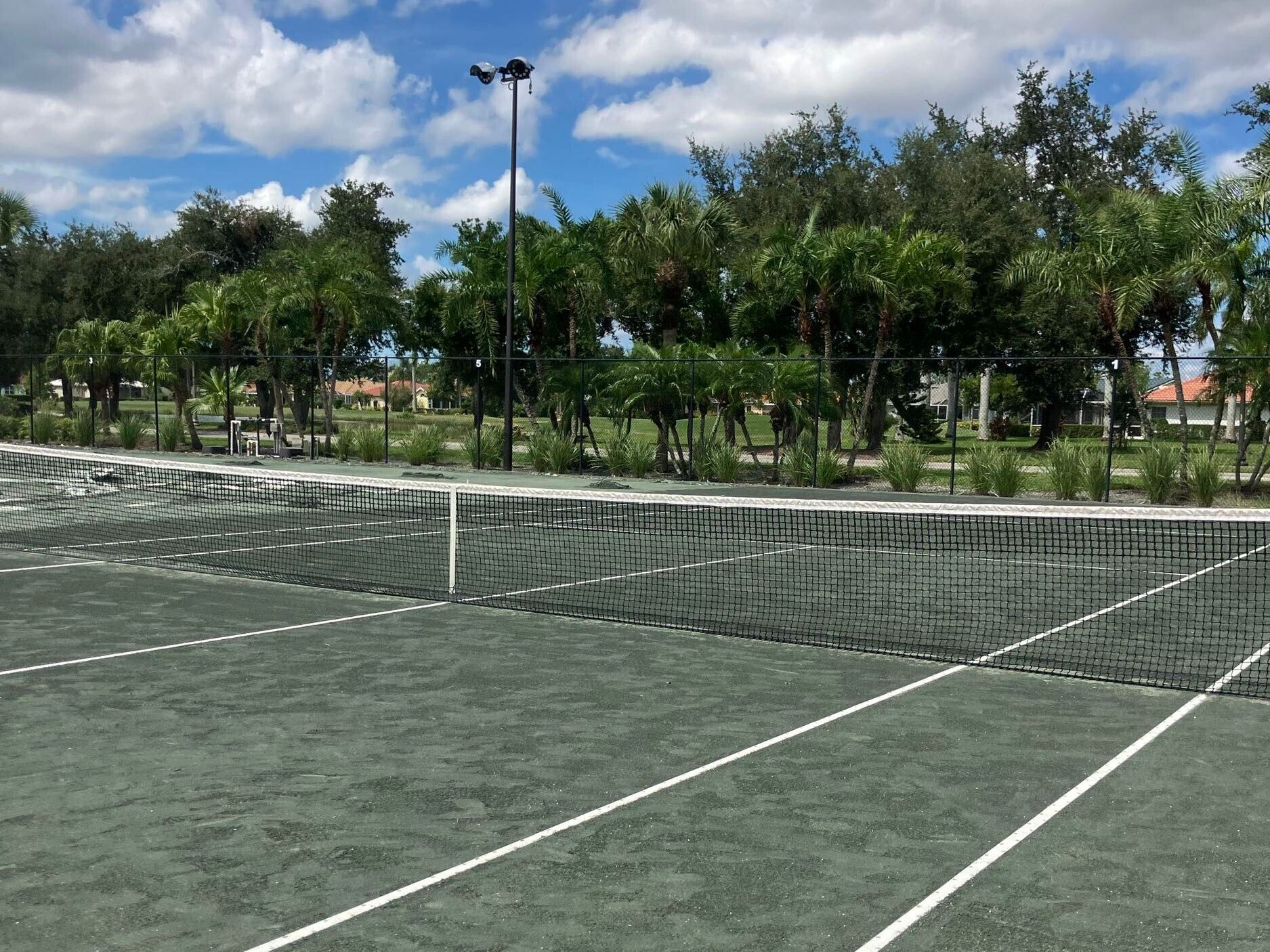Comparing Durability of Tennis Court Surface Materials

Choosing the right tennis court surface isn’t just about playability—it’s about making sure your investment stands the test of time. With installation costs ranging from $25,000 to over $120,000, durability becomes a critical factor. The better the surface holds up under use and weather, the less you'll spend on repairs and resurfacing down the line.
To help you make the best long-term decision, here’s how the most common tennis court surfaces compare in terms of lifespan, maintenance, and overall resilience.
Why Durability Matters in Tennis Court Construction
Durability directly impacts the cost, safety, and performance of a tennis court. A well-constructed court surface should last for years without needing frequent repairs or resurfacing. It is still important to note that not all materials perform equally under daily use, weather changes, or lack of maintenance.
Long-lasting materials reduce the need for resurfacing, which can be a significant cost. On top of that, a durable surface ensures players have a safe and consistent playing experience. Cracks, uneven spots, or poor drainage can make play unpredictable—or worse, lead to injuries.
How Surface Longevity Affects Total Cost of Ownership
A tennis court with a lower initial installation cost is a bargain. But if that surface needs to be replaced every few years, your long-term expenses add up quickly. Surface longevity is one of the most overlooked factors when budgeting for a court project.
Here’s how the total cost of ownership plays out for different surfaces:
- Acrylic hard courts: Moderate installation cost, low maintenance, high durability
- Clay courts: Higher maintenance costs, shorter lifespan without intensive care
- Grass courts: Expensive to maintain, shorter playing season, needs frequent repairs
- Modular and synthetic surfaces: High installation cost, long lifespan, minimal upkeep
Hard Courts
Hard courts, especially those surfaced with acrylic over asphalt or concrete, are the most common in the U.S. for good reason—they’re built to last. These surfaces provide a consistent bounce and require minimal maintenance over the years.
Acrylic Hard Courts vs. Asphalt: Which Lasts Longer?
Both acrylic and asphalt fall under the hard court category, but they differ in durability. Acrylic hard courts involve a smoother, sealed surface that’s more resistant to cracking and weathering. Asphalt courts, especially in older parks, can wear unevenly or crack more quickly if not properly maintained.
Acrylic courts typically last 15–20 years, with regular resurfacing every 4–8 years. Asphalt courts may show signs of wear earlier, particularly in colder climates where freeze-thaw cycles are typical.
Common Wear Issues and How to Prevent Them
Even durable surfaces have weak points. Here’s what to look out for:
- Cracking: Often caused by ground movement or age
- Fading: UV exposure can dull color, but resurfacing can fix this
- Pooling water: Poor drainage or uneven installation may cause standing water, which can damage the surface over time
To extend the life of your hard court:
- Use acrylic resurfacing kits every few years
- Seal cracks early to prevent spreading
- Keep the court clean and debris-free
Clay Courts
Clay courts are loved for their softer feel and slower game pace. They’re often found in Europe and Latin America but are less common in North America due to their upkeep requirements.
Natural vs. Synthetic Clay Longevity
Natural clay courts (typically red or green clay) require daily attention—watering, brushing, and rolling—to stay in playable condition. Without it, the surface degrades quickly.
Synthetic clay is a newer option offering improved durability. It mimics natural clay’s playability while reducing maintenance needs. Even so, synthetic clay still requires more care than hard surfaces.
For more on court construction options that include synthetic surfaces, the American Sports Builders Association (ASBA) is an excellent resource for industry standards and recommendations.
How Climate Affects Clay Surface Lifespan
Clay courts perform best in warm, dry climates. High rainfall can wash away the clay, leading to uneven surfaces. Hot, arid areas require constant watering to keep dust down and the surface compacted.
If you’re in a region that experiences heavy rains or freezes, maintaining a clay court becomes labor-intensive and more expensive in the long run.
Grass Courts
Grass courts are synonymous with tradition and prestige. They offer a fast, low-bounce game that’s ideal for serve-and-volley players. But that beauty comes with high upkeep and short durability compared to other surfaces.
Maintenance Demands and Surface Deterioration
Grass courts require daily mowing, watering, line painting, and reseeding to remain playable. Even with proper care, they typically offer a usable playing season of only a few months. Inconsistent bounce and slippery footing are common issues when the surface becomes uneven or overly worn.
Without expert maintenance, a grass court can deteriorate in just a few years, leading to costly rehabilitation or complete replacement.
Is Artificial Grass a More Durable Alternative?
Yes, artificial turf systems are gaining popularity for their durability and reduced maintenance. These systems typically include a synthetic grass layer with a sand infill to simulate natural play. While the ball bounce is lower and the speed is faster than on real grass, artificial turf is a more budget-friendly and long-lasting solution for those who like the look and feel of grass.
Other Surface Materials
Beyond the big three, there are a few other tennis court surface options worth mentioning.
Modular Plastic Tiles and Their Resilience
Modular surfaces, made from interlocking plastic tiles, are used in multi-use facilities or temporary installations. They’re highly durable, weather-resistant, and easy to maintain. These courts can last 20+ years with little upkeep.
They’re ideal for:
- Indoor facilities
- Temporary courts for events
- Facilities that host multiple sports
The main downside is cost. Modular systems tend to be one of the most expensive to install, which makes them better suited for specialty use or high-end facilities.
Carpet and Wood Courts: Indoor-Only but Short-Lived
Wood courts and carpet surfaces were more common in the past. Today, they’re primarily used in indoor or niche environments.
- Wood: Fastest indoor surface, but susceptible to moisture and wear. Rare today.
- Carpet: Once popular in Europe, now primarily phased out from pro use due to injury risks. Short lifespan and best suited for training purposes.
Tennis Court Surface Durability Comparison Chart
When selecting a tennis court surface, understanding how long each option typically lasts—and what kind of maintenance it requires—can help you make a more intelligent, more cost-effective decision.
Below is a quick comparison of the most common surface types, how durable they are, and where they tend to perform best over time.
| Surface Type | Avg Lifespan | Maintenance Level | Best For |
|---|---|---|---|
| Acrylic Hard Court | 15–20 years | Low | Public courts, schools, clubs |
| Asphalt Hard Court | 10–15 years | Moderate | Parks, municipal facilities |
| Clay (Natural) | 5–10 years | High | Private clubs, clay specialists |
| Synthetic Clay | 10–15 years | Medium | All-purpose private facilities |
| Grass (Natural) | 3–8 years | Very High | Tournaments, prestige venues |
| Artificial Grass | 10–15 years | Medium | Recreational use |
| Modular Plastic | 20+ years | Low | Indoor, multi-sport events |
| Carpet/Wood | 5–8 years | High | Indoor specialty courts |
Choosing the Most Durable Surface for Your Facility
The most durable surface isn’t always the one that lasts the longest on paper—it’s the one that aligns best with your environment, usage, and maintenance capacity.
Matching Surface Type to Usage and Budget
- For frequent, all-weather play, acrylic hard courts offer the best value
- For specialized, performance-based training, synthetic clay or modular surfaces make sense
- For premium venues with dedicated staff, natural grass or clay provides a classic feel
- For temporary or indoor spaces, modular tiles or carpet work well but need careful planning
Tips for Extending the Life of Your Tennis Court
- Regular Inspections: Catch minor issues early, like cracks, standing water, or uneven areas
- Clean the Surface: Dirt and debris can degrade the material over time
- Control Drainage: Proper drainage prevents water damage across all surface types
- Follow Manufacturer Guidelines: Use recommended products for cleaning and resurfacing
Partnering with the Right Experts
If you're looking for long-lasting tennis court surfaces, Mor Sports Group offers professional-grade surfacing materials and installation services tailored to your facility’s needs. Facilities working with Mor Sports benefit from the following:
- Custom surfacing solutions tailored to local weather and usage patterns
- Access to high-quality materials that meet industry standards
- A proven track record with schools, parks, private clubs, and competitive venues
If longevity and low maintenance are your priorities, Mor Sports Group brings the right mix of technical expertise and durable materials to make your court a wise, lasting investment.
Conclusion
The lifespan and maintenance demands of a tennis court surface can dramatically affect both your budget and the quality of play over time. From acrylic hard courts to modular tiles and artificial grass, each material comes with trade-offs between durability, aesthetics, and care.
Ready to build or resurface a long-lasting court? Contact Mor Sports Group for expert advice and high-performance solutions tailored to your facility.
